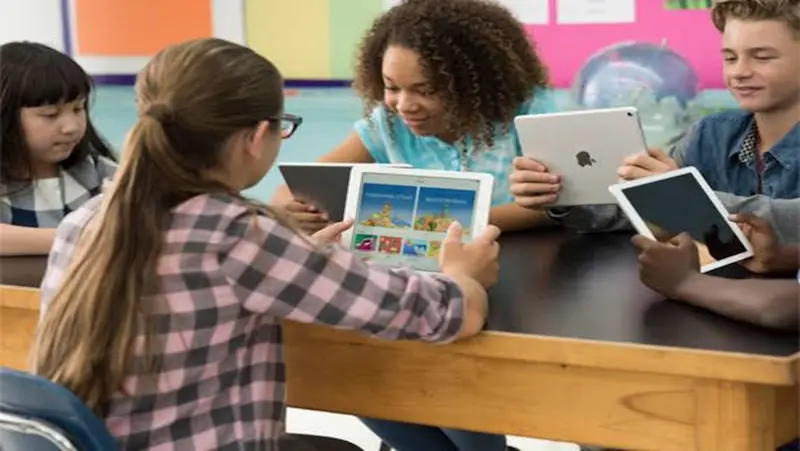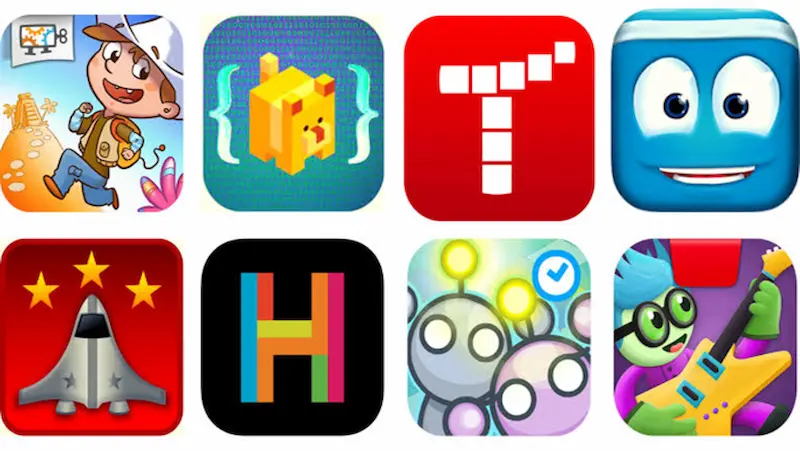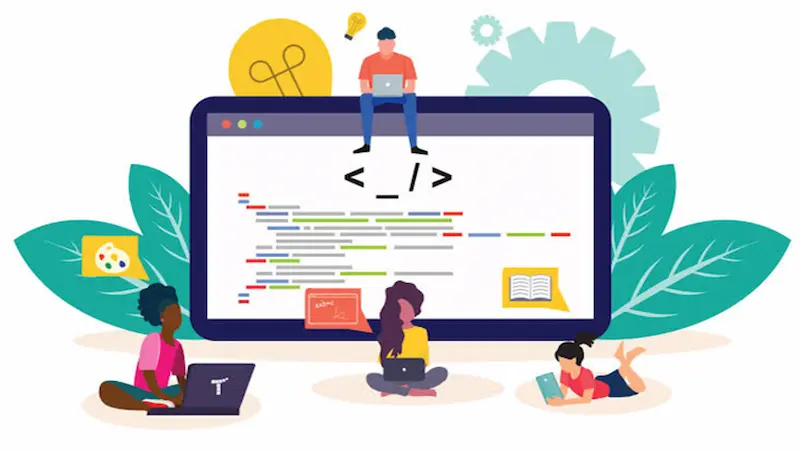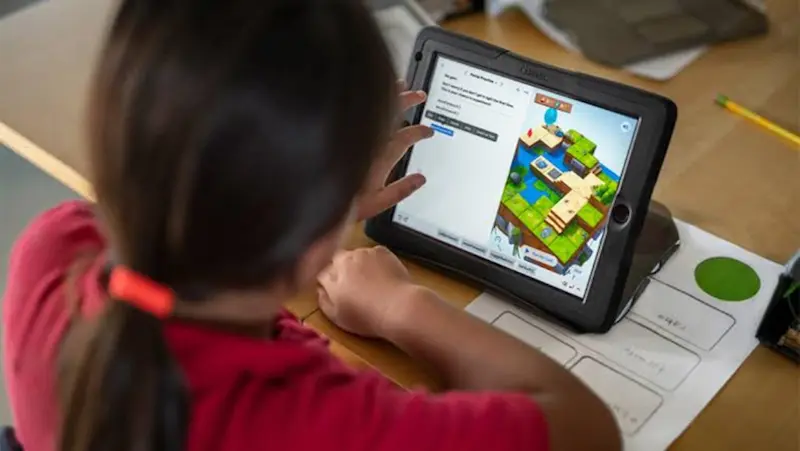In today’s digital age, where technology plays a significant role in our daily lives, it’s crucial for children to develop essential skills that will prepare them for the future. One such skill that has gained immense importance is coding.
Coding empowers kids to become creators, problem solvers, and critical thinkers, all while having fun and expressing their creativity. With the rise of coding classes online for kids, learning coding concepts has become more accessible than ever. These interactive platforms, combined with kid-friendly coding apps, make it simple and enjoyable for young learners to practice and build their skills.
These apps offer interactive and engaging experiences that capture children’s attention and provide them with a solid foundation in programming. In this article, we will explore some of the top coding apps for kids, highlighting their features, benefits, and why they are worth considering for young learners eager to embark on a coding adventure.
Whether your child is a beginner or already has some coding experience, these apps will inspire and challenge them to develop valuable skills that will shape their future. Let’s dive in and discover the exciting world of coding through these innovative apps!
Table of contents
- Introduction
- The Importance of teaching kids to Code
- The Benefits of using coding apps
- Criteria for Selecting Coding Apps for Kids
- Top Coding Apps for Kids
- Coding Games and Puzzles for Kids
- Interactive Coding Lessons for Kids
- Tips for Using Coding Apps with Kids
- Resources for Parents and Educators
- Conclusion
- Frequently Asked Questions
Introduction
In today’s rapidly evolving digital world, technology plays a crucial role in nearly every aspect of our lives. It permeates our homes, workplaces, and communities, shaping the way we communicate, learn, and solve problems.
As technology continues to advance, the ability to understand and create with code is becoming increasingly essential. Teaching kids to code is no longer a mere hobby; it has become a valuable skill that empowers them to thrive in the digital age.
The Importance of teaching kids to Code
Developing Critical Thinking and Problem-Solving Skills
Coding is fundamentally a problem-solving art. Children who learn to code acquire logical reasoning, analytical thinking abilities and critical thinking skills for kids. They are instructed on how to create step-by-step solutions to big problems by breaking them down into smaller, more manageable pieces.
This process teaches kids to think critically, consider situations from various angles, and approach problems methodically. These transferable abilities go beyond coding and are useful in a variety of academic fields and real-world situations, enabling kids to develop their own critical thinking and proactive problem-solving skills.
Increasing Innovation and Creativity
Contrary to popular belief, programming is a very creative activity, not a dull and technical one. With the help of coding, kids may turn their concepts into real-world digital works of art, such as websites, games, or mobile applications.
Kids can use free coding websites for kids to express their curiosity and creativity while creating their own original projects. They are allowed to try new things, fail, and refine their ideas, which encourages creativity and resourcefulness. By encouraging children to learn how to code, we foster their capacity for original thought and motivate them to become the next generation of inventors and innovators.
Increasing resiliency and persistence
Rarely is the process of coding linear. Debugging, trial-and-error, and persistent problem-solving are frequently involved. Kids feel driven to identify the root cause of any bugs or errors they uncover in their programming and fix them.
Children learn resilience and tenacity through this cyclical process, which teaches them not to be deterred by setbacks but to see them as opportunities for improvement. Kids gain a growth attitude and learn to accept failure as a crucial step in the learning process by persevering through difficulties and seeking answers. Beyond coding, this priceless skill set helps people develop resilience in the face of adversity throughout their life.
Increasing Career Possibilities
The ability to code provides a variety of professional prospects as the digital era advances. From technology and engineering to healthcare, finance, and entertainment, the demand for workers with coding abilities is rising quickly in a variety of fields.
We provide children with a competitive edge and build the groundwork for potential career options by teaching them to code. Coding equips students with a flexible skill set that will be in high demand for years to come, regardless of whether they decide to pursue careers as software engineers, data analysts, or entrepreneurs.

The Benefits of using coding apps
Accessibility and Convenience:
Coding apps offer a practical way for both novice and seasoned coders to learn and hone their programming abilities. Users may learn to code whenever and wherever they choose thanks to these apps’ convenient accessibility on smartphones, tablets, and PCs.
This flexibility makes it perfect for busy people, students, or those with limited resources because it eliminates the need for physical classrooms or certain time commitments.
Engaging and Interesting Learning:
Coding apps may make learning to code a really interesting and fun experience. To make learning engaging and interesting, these apps use gamification strategies, interactive challenges, and real-time feedback.
The inclusion of animations, tests, and coding challenges keeps students engaged and promotes active participation, leading to a deeper comprehension of coding ideas.
Hands-on Practice and Experimentation:
Coding applications offer a virtual coding environment where users may experiment and hone their coding skills in a secure and monitored environment. Users can write, run, and test their code in real-time using the coding sandboxes and integrated development environments (IDEs) they provide, which have pre-built templates and libraries.
The application of theoretical knowledge to real-world situations is made possible by this practical approach, which quickens the learning process.
Progressive Learning Pathways:
Coding apps frequently provide systematic learning routes designed for various ability levels, from novice programmers to experienced ones. These learning paths take students step-by-step through a curriculum, gradually presenting new ideas while building on what they already know.
This method of progressive learning ensures a strong foundation and allows students to advance at their own speed, resulting in a thorough education.

Criteria for Selecting Coding Apps for Kids
To make the learning process enjoyable and effective, coding apps designed specifically for kids have gained popularity. However, not all coding apps are created equal. When selecting the top coding apps for kids, several important criteria should be considered, including educational value, age-appropriateness, and engagement.
In this blog post, we will Delve into these criteria and explore why they are vital in choosing the best coding apps for children.
Educational Value
The educational value of a coding app is perhaps the most crucial criterion to consider. It’s crucial to pick apps that offer a controlled learning environment and gradually introduce coding topics. The app should provide a well-laid-out curriculum that starts with fundamental coding concepts and eventually progresses to more intricate ideas.
Look for apps that explain the basics of programming, such as loops, conditions, variables, and algorithms. Additionally, the app should promote the development of critical thinking and problem-solving abilities in children by posing coding-based challenges and puzzles.
Age-Appropriateness
Choose a coding program that fits your child’s age and skill level because different coding apps target different age groups. The majority of apps made for younger kids use games or visual blocks to convey coding fundamentals in a fun and interesting way.
As children become older, they might need apps that offer more text-based programming environments so they can really write code. The recommended age range for the app should be taken into account, as well as your child’s developmental stage, to ensure a successful and enjoyable learning experience.
Engagement
Engagement is essential for capturing and maintaining a child’s interest in coding. Kids should be able to use and grasp the app easily thanks to its user-friendly UI. Additionally, by making learning interesting, interactive components, vibrant images, and gamified features can increase engagement.
Look for apps that let kids make their own animations, games, or interactive stories, or that incorporate storytelling themes. These attributes encourage innovation, maintain kids’ motivation, and cultivate a sense of success.
Parental Controls and Safety
When selecting a coding app for kids, it is essential to consider the safety and security features. Look for apps with effective parental settings that let parents keep an eye on their child’s development and limit access to particular features or content.
Make sure the app has the right privacy settings and doesn’t collect too much personal data. To make sure an app is suitable for kids to use, it’s crucial to read reviews, look into its reputation, and confirm the developer’s legitimacy.

Top Coding Apps for Kids
In today’s digital age, learning to code has become an essential skill. By introducing children to coding at an early age, we empower them to become problem solvers and creators in a technology-driven world. Fortunately, there are several fantastic coding apps designed specifically for kids.
In this blog post, we will explore three popular options: ScratchJr, Code.org, and Tynker. Each of these apps offers unique features, caters to different age ranges, and provides valuable educational experiences.
ScratchJr:
Age Range: 5-7 years
ScratchJr, developed by the MIT Media Lab, is a visual programming language designed to introduce young children to coding concepts through interactive stories and games. It offers a simple and intuitive interface that allows kids to create their own interactive animations by snapping together colorful coding blocks.
Features:
- Drag-and-drop coding blocks: Kids can easily create programs for kids by selecting and combining blocks that represent different commands and actions.
- Creative projects: ScratchJr enables children to design and animate their characters, backgrounds, and storylines, fostering their creativity.
- Storytelling and sequencing: The app encourages kids to think logically and develop storytelling skills by organizing sequences of events.
Educational Value:
ScratchJr promotes computational thinking, problem-solving, and creativity. It helps children understand the fundamentals of coding and nurtures their logical thinking abilities.
Code.org:
Age Range: 4-18 years
Code.org is a comprehensive platform that offers a variety of coding courses and activities suitable for different age groups. It features engaging games, puzzles, and interactive tutorials that make learning to code enjoyable and accessible for children of all backgrounds.
Features:
- Wide range of courses: Code.org provides a diverse set of courses, including beginner-friendly options and more advanced coding challenges.
- Gamified learning: The platform incorporates game-based elements to make the learning experience interactive and fun.
- Hour of Code: Code.org hosts an annual “Hour of Code” event, which introduces millions of students worldwide to coding through short, self-guided tutorials.
Educational Value:
Code.org helps kids develop problem-solving skills, logical thinking, and algorithmic reasoning. It exposes them to different programming languages, such as Scratch and JavaScript, and prepares them for more advanced coding concepts.
Tynker:
Age Range: 7-13 years
Tynker is an interactive coding platform that offers an extensive curriculum for kids to learn coding concepts, create games, and build their own apps. It uses a block-based visual programming interface initially and gradually introduces text-based coding.
Features:
- Comprehensive coding curriculum: Tynker provides a structured learning path with interactive lessons, tutorials, and coding challenges.
- Game design and app development: The app allows kids to design and build their own games, animations, and mobile applications.
- Community and sharing: Tynker fosters a supportive community where kids can share their projects, learn from others, and gain inspiration.
Educational Value:
Tynker enhances problem-solving abilities, computational thinking, and creativity. It equips children with practical coding skills and encourages collaboration and sharing within a community of young coders.
Coding Games and Puzzles for Kids
Coding is not just a technical skill; it’s a creative and problem-solving endeavor that can be incredibly enjoyable. While learning to code through textbooks and tutorials is essential, incorporating interactive and engaging activities into the learning process can make it even more fun and educational.
In this blog section, we will showcase a variety of coding games and puzzles that not only entertain but also help you sharpen your coding abilities. Whether you’re a beginner or an experienced programmer, these resources will provide you with a playful way to enhance your coding skills.
CodeCombat:
A well-known coding game that makes learning programming fun is called CodeCombat. Players move through a fantasy world on an immersive, interactive platform while resolving code problems to advance in the game. CodeCombat gives you the opportunity to practice coding topics in a visually appealing and fun environment using real programming languages like Python and JavaScript.
CodinGame:
CodinGame is the ideal option if you’re seeking a coding environment that provides a variety of puzzles and tasks. CodinGame offers a huge selection of coding games for kids and workouts that cover a wide range of programming languages and levels of complexity.
You can play games you make yourself, participate in coding competitions, and solve puzzles. The platform offers a friendly and competitive environment for developing your coding abilities.
Human Resource Machine:
In the puzzle game Human Resource Machine, coding problems are presented in the form of administrative duties. You take on the role of a worker at a made-up company where your job is to automate processes using a straightforward visual programming language.
The problems get more challenging as you advance through the game, necessitating critical thinking and solution optimization. It’s a pleasant method to study the foundations of algorithmic reasoning and programming logic.
Robocode:
Robocode is an open-source programming game where you can build virtual robots and engage in combat with other players. You create programming to direct the actions and plan of your robot using Java or .NET. You can learn about artificial intelligence, decision-making algorithms, and the fundamentals of robot programming through this practical experience. An engaging environment for learning and demonstrating your coding abilities is Robocode.
Blockly Games:
Blockly Games is a Google educational project that offers a selection of games made to help novices learn the basics of coding. The coding concepts are simple to understand and grasp since the games employ a visual programming language built on blocks. You begin with straightforward puzzles and work your way up to more difficult difficulties as you hone your problem-solving and logical thinking skills.

Interactive Coding Lessons for Kids
In today’s digital age, coding has become an essential skill, and introducing children to coding at an early age can foster their creativity, problem-solving abilities, and logical thinking.
Traditional teaching methods can sometimes be daunting for kids, which is why interactive and engaging approaches to coding lessons have gained popularity. In this blog section, we will highlight some of the most effective methods used to teach coding to kids in a fun and interactive way.
Gamification:
This strategy has proven to be one of the most effective ways to get kids interested in coding. Children become engaged and inspired to overcome coding problems when coding lectures are made into games.
Children may play a number of interactive games that teach them the basics of coding while keeping them entertained on websites like Scratch, Code.org, and Tynker. Children can learn coding concepts through gamification by completing levels, gaining access to achievements, and even making their own games.
Robotics and physical computing:
Including these concepts in coding, lectures can significantly improve students’ learning outcomes. Children can witness the immediate effects of their coding instructions through hands-on activities using programmable robots and electronic kits.
Kids may create and program their own robots and devices using tools from platforms like Lego Mindstorms, Arduino, and Raspberry Pi, which makes learning engaging and practical.
Visual Programming Languages:
Visual programming languages help young learners understand difficult coding ideas by making them simpler. Kids can drag and drop puzzle pieces or blocks that represent various programming instructions instead of inputting lines of code.
Popular visual programming languages like Blockly and Scratch let kids connect building blocks to make animations, interactive stories, and games. Coding is more approachable and enjoyable for children due to the visual feedback and rapid results.
Projects in Collaboration:
Projects in Collaboration foster teamwork, communication, and problem-solving abilities. Children can collaborate on coding projects while assigning roles and coming up with solutions.
Kids can collaborate on coding projects and share their work with others on websites like GitHub and GitLab. In addition to fostering a sense of community, collaborative coding allows children to learn from and inspire one another’s creativity.
Creative Projects:
Combining code with artistic endeavors appeals to kids’ creative sides and inspires them to investigate coding in more depth. Kids can design their own digital works of art by fusing coding with music, art, or storytelling.
For instance, kids can use Sonic Pi to compose music, Processing to make animations, or Twine to make interactive stories. These innovative ideas encourage children to think outside the box during coding courses and make them more engaging.
Tips for Using Coding Apps with Kids
In today’s digital age, teaching kids coding skills has become increasingly important. Coding apps offer a fun and interactive way for children to learn programming classes for kids concepts and unleash their creativity.
However, to maximize the benefits of these apps, parents and educators need to know how to use them effectively. In this blog section, we will offer practical tips and advice on how to make the most out of coding apps when teaching kids.
Choose the Right Coding App:
Not all coding apps are created equal. It’s crucial to pick an app that accommodates the child’s age, level of expertise, and learning preferences. Search for apps with a simple user interface, fun activities, and a logical sequence of courses. You should also study reviews and look for referrals from reliable sources to confirm the app’s credibility and instructional value.
Set Clear Learning Goals:
Prior to beginning with a coding app, it is essential to set clear learning objectives. Then, while using the app, concentrate on teaching the child those particular abilities or ideas. You may monitor progress and adapt the learning environment to the needs of the child by setting goals.
Encourage exploration and creativity:
Coding games and applications frequently provide kids the chance to make their own apps, animations, or games. Encourage kids to explore and play around with the app’s various tools and capabilities. Children are given the freedom to create their own projects while learning the fundamentals of coding, which encourages creativity and problem-solving abilities.
Balance Guidance and Independence:
Giving kids freedom for independent inquiry is just as vital as offering them advice and support, so strike a balance between the two. Offer simple explanations and instructions at first, then gradually back off and let them figure things out on their own. This strategy develops coding skills while encouraging resilience and critical thinking.
Collaborative Learning:
Collaboration and teamwork are made possible by the capabilities that many coding apps provide. Encourage kids to collaborate on coding projects with their friends, siblings, or classmates. In addition to improving their coding skills, collaborative learning also encourages communication, problem-solving, and cooperation skills.
Integrate Coding into Real-World Projects:
Coding techniques work best when they are put to use in practical situations. Encourage children to apply their knowledge of coding to complete tasks or make projects that are relevant to their hobbies or daily life. They might create a website maker for kids, a game, or an app that highlights their interests or addresses a particular problem.

Resources for Parents and Educators
BrightCHAMPS:
CodeChamps by BrightChamps is an extraordinary platform that ignites young minds with the power of coding. It is a creative wonderland where kids dive into the captivating world of programming, learning to unravel complex algorithms and craft their own digital masterpieces.
With a holistic curriculum, CodeChamps nurtures the innate problem-solving abilities of children, fostering their creativity and critical thinking. CodeChamps is where dreams come alive, and the future of innovation takes flight.
Coursera:
Coursera is a leading online platform that offers a vast array of courses from renowned universities and institutions. For parents and educators, it provides access to courses on child development, learning theories, pedagogy, and educational technology. Some recommended courses include “The Science of Parenting” by Yale University and “Learning to Teach Online” by the University of New South Wales.
Khan Academy:
Khan Academy is a non-profit organization that provides free educational resources across various subjects. Their library of video lessons, practice exercises, and quizzes covers math, science, history, and more. Parents can use Khan Academy to support their child’s learning, while educators can find valuable resources to supplement their teaching.
TED-Ed:
TED-Ed offers a collection of educational videos on a wide range of topics. Their engaging animations and storytelling approach make complex concepts easily understandable. Parents and educators can explore TED-Ed lessons, which come with discussion questions and additional resources for deeper exploration.
EdX:
EdX is an online learning platform that partners with prestigious universities and institutions. It offers a diverse range of courses for parents and educators, including subjects like early childhood education, literacy development, and inclusive teaching practices.
Notable courses include “The Best Start in Life: Early Childhood Development for Sustainable Development” by Harvard University and “Differentiating Instruction: Personalized Learning for Student Success” by Columbia University.
National Geographic Kids:
National Geographic Kids provides an interactive learning platform filled with articles, videos, games, and quizzes on science, geography, and animals. It is an excellent resource for parents to inspire their child’s curiosity about the world and for educators to incorporate multimedia content into their lessons.
Code.org:
For parents and educators interested in introducing children to coding and computer science free computer games for kids, Code.org offers a wealth of resources. Their courses and tutorials, designed for various age groups, promote computational thinking and problem-solving skills. The platform provides a fun and engaging way for children to learn the basics of coding.
Udemy:
Udemy is an online learning marketplace that offers a vast range of courses on different subjects, including parenting skills, child psychology, and teaching methodologies. Parents and educators can find both free and paid courses taught by experts in their respective fields. Coding classes for 4 year olds are also available, tailored to introduce young children to basic coding concepts through engaging and age-appropriate activities.
Conclusion
In conclusion, coding apps for kids play a crucial role in today’s digital age, offering numerous benefits and opportunities for young learners. These apps have become essential tools in introducing children to the world of coding and programming in a fun and interactive way.
First, coding apps foster critical thinking and problem-solving skills. By engaging in coding activities, kids learn to break down complex problems into smaller, manageable parts and develop logical thinking abilities. They are encouraged to analyze, strategize, and find creative solutions, which are valuable skills applicable to various aspects of life.
Second, coding apps promote computational thinking. Kids learn to approach challenges systematically, identify patterns, and apply algorithms to solve problems. These skills are fundamental in computer science and can enhance children’s abilities in mathematics, science, and even everyday tasks.
Third, coding apps help prepare kids for future careers. In today’s job market, proficiency in coding and programming is highly sought after. By introducing children to coding at an early age, they can develop a solid foundation and potentially pursue careers in technology-related fields.
Even if they don’t choose a career in coding, the skills acquired through coding apps, such as problem-solving, logical thinking, and creativity, are transferable and valuable in various professions.
In summary, coding apps for kids offer a multitude of benefits. They empower children to become active creators of technology, enhance their problem-solving abilities, foster creativity and innovation, promote collaboration and communication skills, and prepare them for the digital future. By embracing coding apps, we can equip the next generation with the tools they need to thrive in an increasingly technology-driven world.
Frequently Asked Questions
Coding apps for kids are educational applications designed to teach children the basics of programming and coding. They typically use visual interfaces and interactive exercises to introduce coding concepts in a fun and engaging way.
Popular coding apps for kids include Scratch, Code.org, and Tynker. These apps cater to a wide age range, starting from around 5 years old up to teenagers.
Yes, coding apps can be instrumental in developing problem-solving and critical-thinking skills in children. Through coding challenges and puzzles, kids learn to break down complex problems, think logically, and find creative solutions.
Absolutely! Coding apps often incorporate game-like elements, interactive features, and colorful visuals to make the learning process enjoyable and engaging for kids.
Coding apps can serve as both a supplement to in-person coding classes and a standalone resource. They can reinforce concepts learned in class or provide a self-paced learning experience outside of the classroom.
Coding apps typically offer a structured curriculum, but they are often best used as supplementary tool to reinforce concepts and provide additional practice. In-person classes or more comprehensive programs may be necessary for complete coding education.
There are several free coding apps available for kids, such as Scratch and Code.org. However, some apps may offer premium features or content through a subscription model.
Many coding apps provide progress tracking and reporting features. Parents can monitor their child’s progress, view completed projects, and see areas where they may need additional support. Feedback may include completion badges, scores, or suggestions for improvement.
Privacy and safety concerns can vary among coding apps. It’s important to review the privacy policies and ensure the app adheres to proper security measures. Parents should also supervise their child’s app usage and teach them about responsible online behavior.
The amount of time a child should spend on coding apps depends on their age, interest, and availability. Starting with a few sessions per week, gradually increasing to 1-2 hours, can provide meaningful progress. It’s important to balance screen time with other activities for a well-rounded learning experience.


 We are an army of educators and passionate learners from BrightChamps family, committed to providing free learning resources to kids, parents & students.
We are an army of educators and passionate learners from BrightChamps family, committed to providing free learning resources to kids, parents & students.










